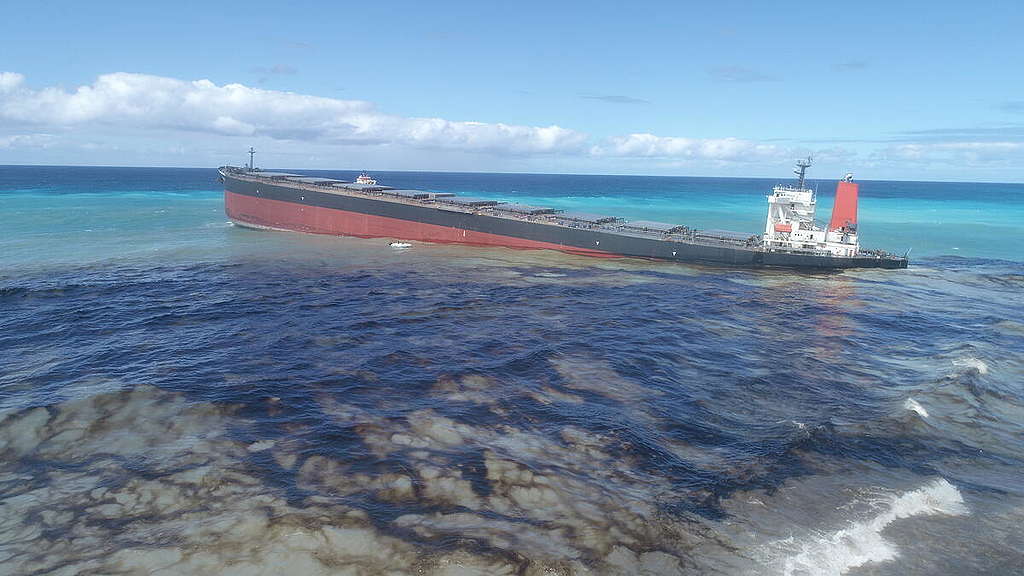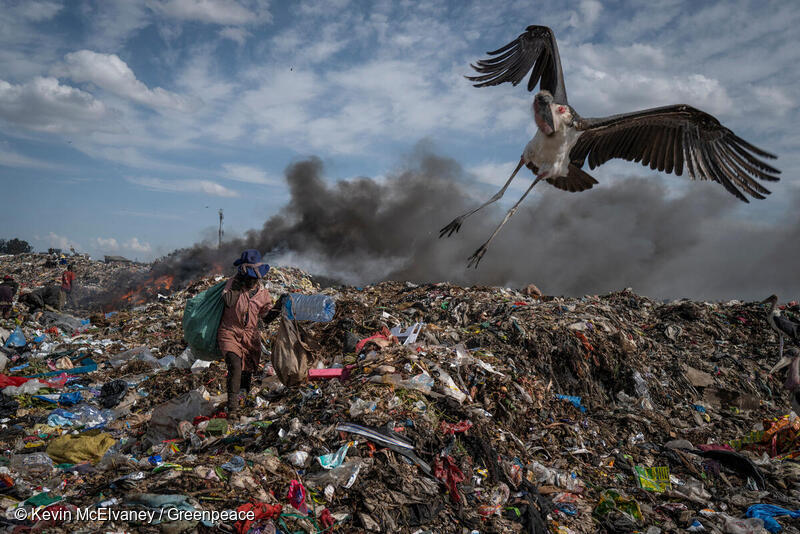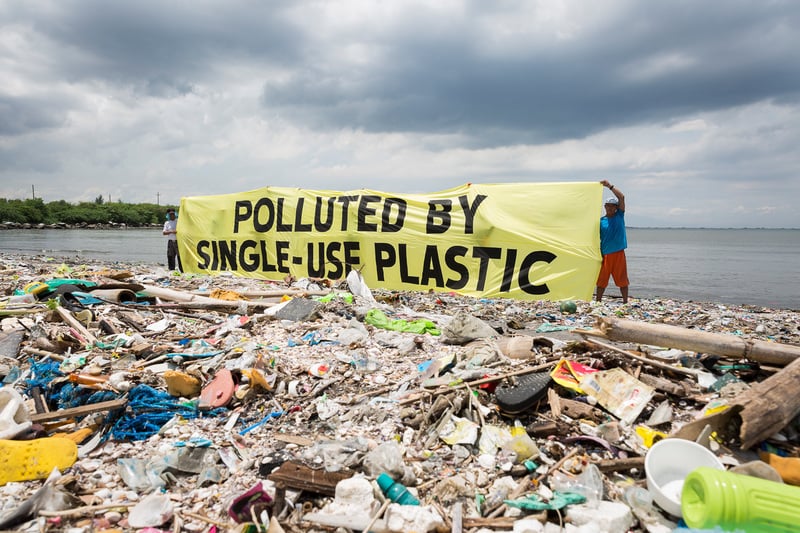
Press Release
Johannesburg, 6 November 2020 – On August 6, Mauritius local time, the MV Wakashio began to leak it’s heavy fuel oil offshore of Pointe d’Esny, south of Mauritius, two weeks after the Japanese bulk carrier ran aground on a coral reef. Sensitive ecosystems in Mauritius’ lagoon and shoreline have been contaminated and might take decades to recover. Furthermore, four mariners who have lost their lives or have gone missing and thousands of dead sea creatures, including over 50 whales and dolphins – though the link between these tragedies and the oil spill remains unclear. Three months after the oil began to spill into their ocean, Mauritians are left with more questions than answers.
Three months after oil began to leak from the Wakashio, Greenpeace Africa and Greenpeace Japan have placed a two-page advert in Mauritius’ most widely read newspaper, l’express. The advert is calling on the Government of Mauritius to reveal all that it is hiding, along with the complete letter that the government has ignored so far.
Happy Khambule, Greenpeace Africa Senior Climate and Energy Campaign Manager: “The worst ecological disaster in the history of Mauritius should never have happened, but it should have also never been handled in defiance of the minimum standards of transparency. Similarly, there have been more troubles than solutions for fishing communities that have lost their basic income, children whose playgrounds have turned into toxic puddles, and unique biodiversity being smothered by crude oil.”
Below are some of the key questions which must be answered by the Government of Mauritius, international organisations and Japanese company Mitsui OSK Lines:
1. Non-transparent investigations into how and why the Wakashio ran aground: three months after one of the world’s largest vessels ran aground into a biodiversity hotspot in Mauritius, it remains unclear what happened, why the Government of Mauritius and Japanese company did not react in the first 12 days and why the population was not properly supported. It is unclear why experts were not called in on 25 July and why local expertise is not being harnessed by the government and why Japan is leading the investigation.
2. Impact investigations on nature and health: there is only very limited information shared on the state of fish and seafood and the risks to health and no independent investigation undertaken
3. The death of more than 50 whales and dolphins: it remains unclear where the carcasses are, what labs are conducting the necropsies in the island of Réunion or what were the exact findings of the Mauritian labs in the Albion Fisheries Research Center: what exactly are they analyzing and when will results be published?
4. Why were the local population and Mauritian diaspora ignored in the response to the oil spill? Among Mauritians, there are tremendous reservoirs of knowledge of the ocean and the biodiversity on the island. Instead of professionally benefiting from their expertise, masses of locals were engaged voluntarily in bold and innovative cleanup efforts, in areas that were eventually closed off by Mauritian authorities.
5. Who was responsible for deciding on the final sinking location of the front section of the Wakashio? What alternatives to sinking the bow were considered, and why were they rejected? What actions were taken by Mauritian, French, Maltese and Panamanian authorities regarding the sinking of the Wakashio? What role did the vessel insurer – the Japan P&I Club – play? Specifically, why has the Wakashio not been towed to a shipyard, as Greenpeace called for? What risk assessment has been conducted towards biodiversity and toxins that can spread to Mauritius and Reunion Island (part of the EU)?
6. What will be the fate of the stern (the back part of the vessel)?
7. Why have the so-called Cleanup efforts, coordinated by Japan P&I Club, been largely secretive and entirely lacking in transparency?
8. What has been the mandate of the UN’s International Maritime Organisation (IMO) in response to the oil spill?
9. How are compensation talks being held? The Government of Mauritius seems to engage in unclear backdoor deals with the Government of Japan, while no “claims office” has been set up and no transparency has been offered on how compensation talks are being conducted and how they are aligned with international law.
10. What has been the damage to mangroves affected by the oil spill: while at least one NGO has been allowed in the affected area to assess damage to the mangroves, no information has been made public regarding the state of the affected mangroves, what methods are being used to clean the area (some cleaning methods are extremely hazardous to the environment).
ENDS
Notes:
- The newspaper advert in l’express on Friday, 6 November, can be downloaded here.
- Photos available here with credit.
Contact for interviews and more information:
- Tal Harris, Greenpeace Africa International Communications Coordinator, +221-774643195, [email protected]
- Greenpeace Africa newsdesk: [email protected]




